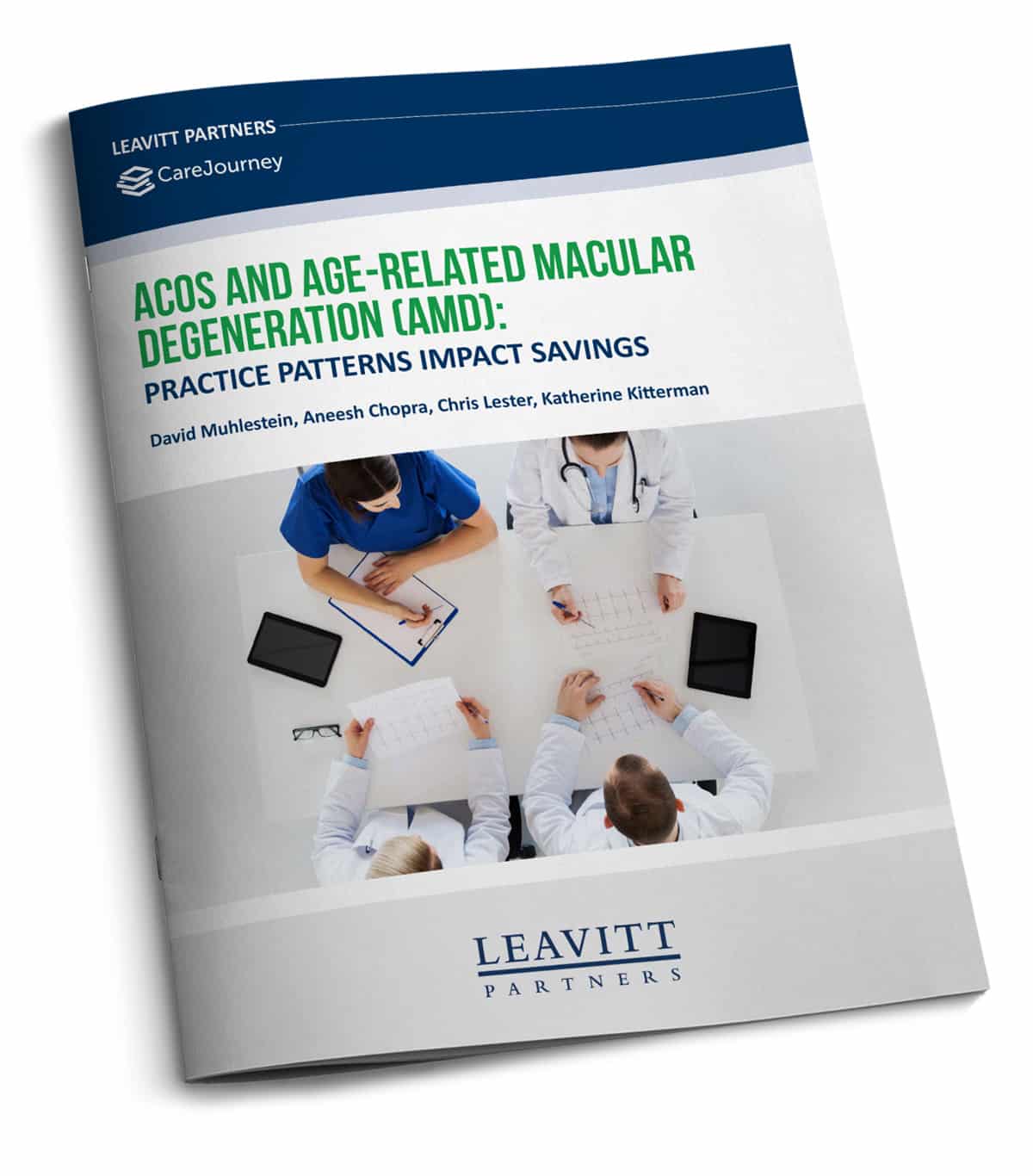WHITEPAPER
ACOs and Age-Related Macular Degeneration (AMD)
Practice Patterns Impact Savings
April 17, 2020
Download the Whitepaper
Introduction
Accountable care organizations (ACOs) attempt to lower the cost of health care for a defined population while improving the quality of care that population receives. Reducing the total cost of care requires ACOs to implement both payment reform and delivery reform—changing payment models to align incentives for high-value care and shifting treatment to use resources more effectively.
In recent years, only approximately one third of ACOs qualified for bonus payments, while in the past year more ACOs have dropped out of the Medicare Shared Savings Program (MSSP) than have newly joined. ACOs often struggle to find effective ways to reduce health care costs without potentially impacting their beneficiaries’ quality of care. Many payment and delivery reforms can take years to yield savings, so ACOs need to find manageable, targeted interventions that can contribute to savings in the shorter term as they progress along the path toward value-based care.
ACOs have an opportunity to switch patients to similarly effective but less-expensive medications for particular conditions. Our analysis of Medicare claims data from 2014 to 2016 indicates that switching to the least expensive drug for one cohort of patients can make a meaningful impact on total ACO cost performance.
- Switching certain patients to the least expensive drug approved to treat age-related macular degeneration (AMD) would have yielded significant savings for ACOs, including 62 times over the three-year period that ACOs would have qualified for a bonus payment but didn’t.
- In 2016, a quarter of ACOs that saved money for Medicare but did not qualify for a bonus payment would have qualified for a bonus payment if they had used the lower-cost drug.
- Small adjustments such as these could present large opportunities for ACOs to achieve savings without sacrificing quality of care.
The rising percentage of AMD claims that used high-cost drugs in recent years indicates an increasing use of drugs other than Avastin to treat AMD. Despite physicians’ knowledge about the lower cost of Avastin, its relative use has decreased over time within Medicare ACOs. This represents a significant lost opportunity for savings.


